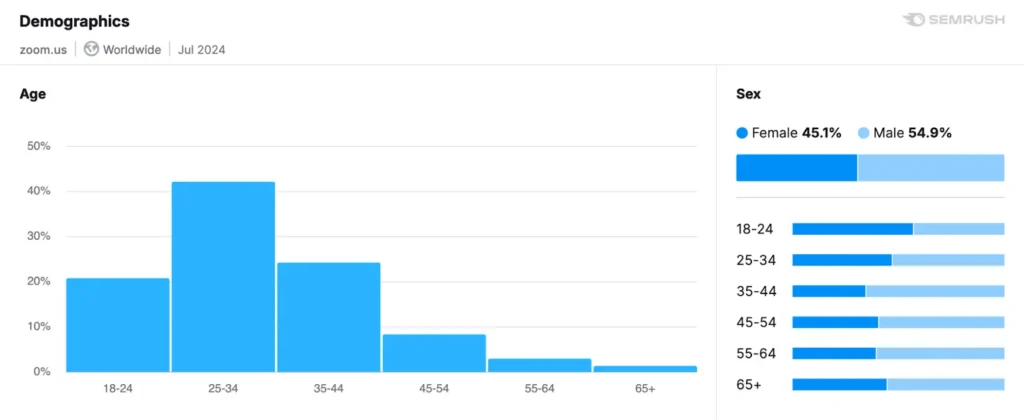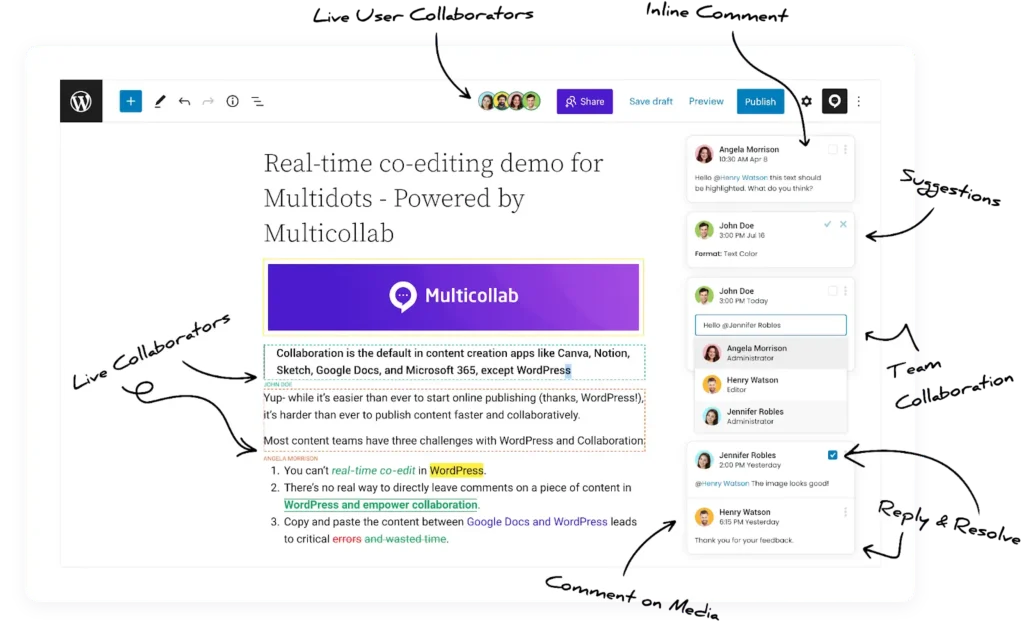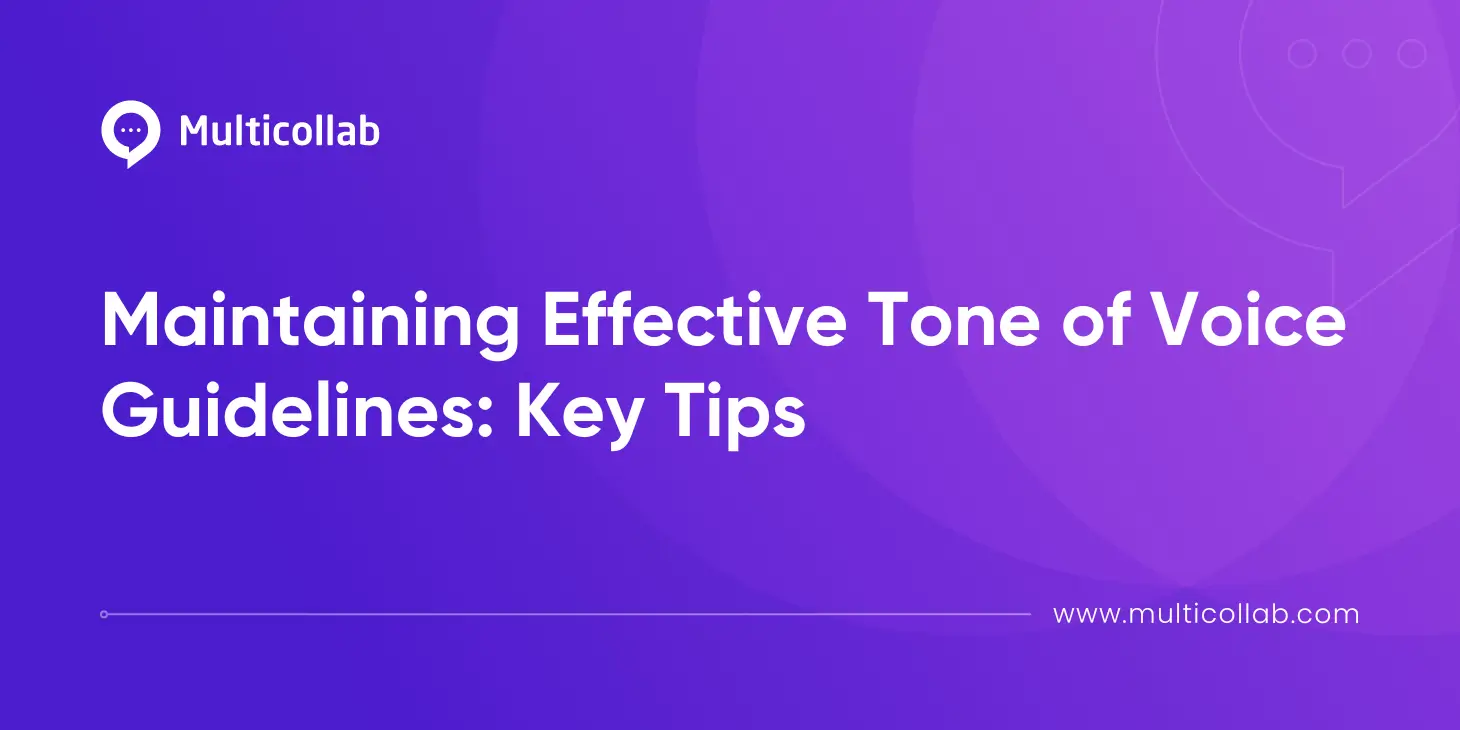Table of Contents
Key Takeaways
- Inconsistent tone confuses audiences and damages credibility, while a unified voice builds trust and recognition.
- Brand voice is the overall personality, while tone adapts based on context, platform, and audience needs.
- To build effective guidelines, define values and mission, identify audience personas, analyze top-performing content, create a tone of voice document, use do’s and don’ts lists, and train your team.
- Keep guidelines accessible, use collaboration tools for feedback, schedule regular reviews, and seek external input to refine tone.
- Real-time commenting, co-editing, and feedback loops help teams apply the right tone consistently across all channels.
Inconsistent brand messaging can seriously hurt your brand’s reputation. Even if your product or service is top-notch, the wrong tone of messaging can derail your efforts.
Picture this: a company with a serious, professional tone suddenly shifting to a casual, humorous style in an important press release. This instance will leave the audience confused and damage the brand’s credibility. That’s why establishing and maintaining comprehensive tone of voice guidelines is essential.
According to Marq’s State of Brand Consistency report, 15% of companies lack these guidelines, yet 68% of them acknowledge that brand consistency has driven a 10-20% increase in revenue.
A unified tone of voice helps your audience receive the message you intend and builds genuine connections with customers. Without standardized voice guidelines, your brand is at risk.
In this blog post, we’ll walk you through the steps to create and maintain effective tone of voice guidelines. Plus, we’ll explore how tools like Multicollab can help you refine and implement these guidelines seamlessly.
Why Do You Need Brand Tone of Voice Guidelines?
A brand voice is the unique personality and style that a brand uses in all its communications. It’s the way your brand “speaks” across various channels, from social media posts to formal press releases. Based on the type of industry your brand caters to, your brand’s voice can be authoritative, playful, or empathetic.
For instance, Patagonia’s voice reflects its commitment to environmental and social causes with its authentic and inspirational messaging, deepening its connection with the audience.
A well-defined brand voice is crucial because it fosters a sense of trust and helps you stand out. As a result, your brand becomes more memorable and recognizable, strengthening its connection with the audience.
Tone of Voice: This is about the mood or emotion behind your messaging. It’s how you adjust your brand’s personality to suit different contexts and audiences. The right tone of voice can:
- Tailor your message to fit the context and audience.
- Make your communication more relatable and engaging.
- Reflect on your brand’s ability to handle various scenarios and audience needs.
Brand Voice vs. Tone of Voice
Brand Voice: Your brand’s overall personality, like IBM’s professional and knowledgeable voice.
Tone of Voice: This adapts within the brand voice.
When Patagonia tackles serious issues like environmental conservation, the tone shifts to be more serious, urgent, and sometimes provocative. This approach aims to drive awareness and spur action. On social platforms, Patagonia uses a more casual, conversational, and friendly tone. This helps them connect on a personal level, encouraging community involvement.
‘Tone of voice’ guidelines make sure that every piece of content hits the same high standards, resonates with the audience, and stays true to its brand personality, no matter where or how it’s shared.
How To Create Tone of Voice Guidelines: A Step-By-Step Guide
Crafting tone of voice guidelines can feel like a big task, but breaking it down into steps makes it manageable. Here’s a clear guide to help you get started:
Step 1: Define Brand Values and Mission
To get your brand’s tone of voice just right, start by defining your mission and core values. These are like the blueprint for your brand’s personality and style. Think of them as the core of who you are and why you exist – kind of like your brand’s “why” and “how.” Check out how Patagonia does it for some inspiration.
Clearly spell out your mission statement to showcase what your company stands for and what goals you’re aiming for. Next, list your core values – they should reflect your brand’s principles, culture, and what’s most important to you. These values will guide every bit of content you create, keeping it all in line with your brand’s true self.
Step 2: Identify Your Audience
To nail your brand’s tone of voice, you need to know your audience inside and out. Start by creating detailed buyer personas – these are profiles of your ideal customers, showing their demographics, preferences, pain points, and how they like to communicate. Tools like SEMrush Market Explorer can help you gather this info.

Do some deep research to build personas that truly represent your audience. This way, you’ll ensure your content hits the right notes and speaks directly to your audience’s needs and interests.
Check out guides on creating buyer personas for more tips.
Step 3: Analyze Existing Content
Reviewing your top-performing content will help you see what really clicks with your audience. Check out metrics like engagement rates, shares, and comments to find out what’s working and how your tone is landing. Look for patterns and themes that resonate well, and use these insights to tweak your tone of voice guidelines.
Here’s a top tip: 36% of brands struggle to incorporate their unique voice into AI-generated content. So, make sure that you build a great content team so that your brand’s personality shines through.
Step 4: Create a Tone of Voice Document
Now, it is time to put everything together into a clear and easy-to-understand ‘Tone of Voice’ document. This will become your go-to guide for keeping your brand’s voice consistent and spot-on. Here’s what to include:
Voice Attributes: Describe your brand’s personality with specific tone of voice words and examples. For instance, your tone might be:
- Professional but approachable
- Informative yet engaging
- Respectful with a hint of humour
- Confident without being arrogant
Language and Grammar Guidelines: Specify your preferred language usage. This includes grammar, punctuation, and any regional preferences like American versus British English.
Purpose: Outline how different types of content might need different tones. For example, instructional content should always be clear and direct, while promotional material can benefit from being more persuasive and enthusiastic.
Adjustments for Different Channels or Contexts: Explain how the tone might vary depending on the platform. For instance, a formal tone might be needed for official reports, while social media posts can be more conversational.
Do not forget to provide real or hypothetical examples to show how your tone should come across in various communications—think emails, social media, official reports, or customer service interactions. This will help everyone on your team stay on the same page.
Step 5: Use Do’s and Don’ts Lists
Crafting do’s and don’ts lists is a great way to give your team clear guidance on what fits your brand voice and what doesn’t. Include specific phrases to use and avoid, the right level of formality, and how to handle jargon. For example, you might say, “Do use friendly, conversational language,” but “Don’t rely on industry jargon that might confuse your audience.”
Step 6: Implement and Train
Now that your tone of voice guidelines are ready, it’s time to roll them out to your team. Make it interactive – use real-world examples and hands-on exercises to bring the guidelines to life. Don’t forget that training is crucial. So, you can host workshops, presentations, or webinars to walk everyone through these guidelines. Tools like Pitch can be handy for this.
To make things even smoother, consider setting up a mentor or buddy system. Experienced team members can help new hires get the hang of the guidelines and apply them effectively.
Best Practices for Tone of Voice Consistency
Use Multicollab for Collaborative Tone of Voice Refinement
Keeping a consistent tone of voice can be tricky, especially when multiple authors are involved. That’s where Multicollab steps in to save the day. Its real-time collaboration features make it easy for your team to work together and fine-tune the tone of voice across all content.
With Multicollab, you can comment directly on specific sections, tag team members for targeted feedback, and reply to comments in real time. This means everyone can weigh in on language choices and phrasing right when they’re needed, ensuring that every piece of content stays true to your brand’s voice.

Another bonus? Multicollab helps streamline your workflow and cut down on publishing time. You can make adjustments quickly and see how they impact the overall tone. If you want to streamline your process even further, consider using tools like Claude, which enables you to use AI to check your content briefs and articles against your guidelines.
By integrating Multicollab into your content workflow, you can easily turn editing from a chore into a smooth, efficient process. It makes maintaining a consistent tone across all your communications a lot easier.
Easy Access for All Team Members
For your tone of voice guidelines to be truly effective, they need to be easy for everyone on your team to access. Store your guidelines in cloud-based solutions like Google Drive, Dropbox, or your company intranet. This way, your team can quickly refer to them whenever needed.
For added convenience, consider using a WordPress plugin like Document Library Pro to keep everything organized and within easy reach. A centralized location ensures everyone stays aligned and makes updating documents a breeze.
Regularly Review and Update Your Tone of Voice Guidelines
To keep your tone of voice guidelines fresh and relevant, schedule regular reviews. Check in on your guidelines biannually and involve key stakeholders in the process. Use feedback loops and performance metrics to guide your updates.
A handy tip: turning these reviews into a team-building exercise can deepen everyone’s understanding and commitment to the brand’s voice. This way, your guidelines evolve with your brand and stay in sync with audience expectations.
External Feedback
Don’t forget to gather external feedback to get a fresh perspective on your brand’s tone of voice. Conduct surveys, interviews, or focus groups with customers, partners, and industry experts. This feedback can show you what’s hitting the mark and what might need a bit of fine-tuning.
By analyzing these insights, you can ensure your communication not only aligns with your brand’s goals but also really connects with your audience. This boosts your credibility and helps engage your audience more effectively.
Elevate your Brand Voice Guidelines with Multicollab
Creating an extensive tone of voice guidelines document will help keep your brand consistent across every communication channel. By leveraging the tools mentioned above and maintaining a disciplined approach to your tone of voice guidelines, you’ll foster a unified, engaging brand presence across all platforms.
Multicollab’s features, like real-time editing, inline commenting, and suggestion mode, make it easy to collaborate and refine your guidelines. It can help cut down on errors, save time, and boost the quality of your content. Plus, it allows multiple team members to work on the guidelines simultaneously, ensuring that everything meets your tone of voice standards before it’s published.
By integrating Multicollab into your workflow, you can elevate your brand voice guidelines and maintain a unified, engaging brand presence everywhere you communicate. So why wait? Try Multicollab on your website with a 14-day free trial and experience the efficiency it can bring to your content creation workflow.







